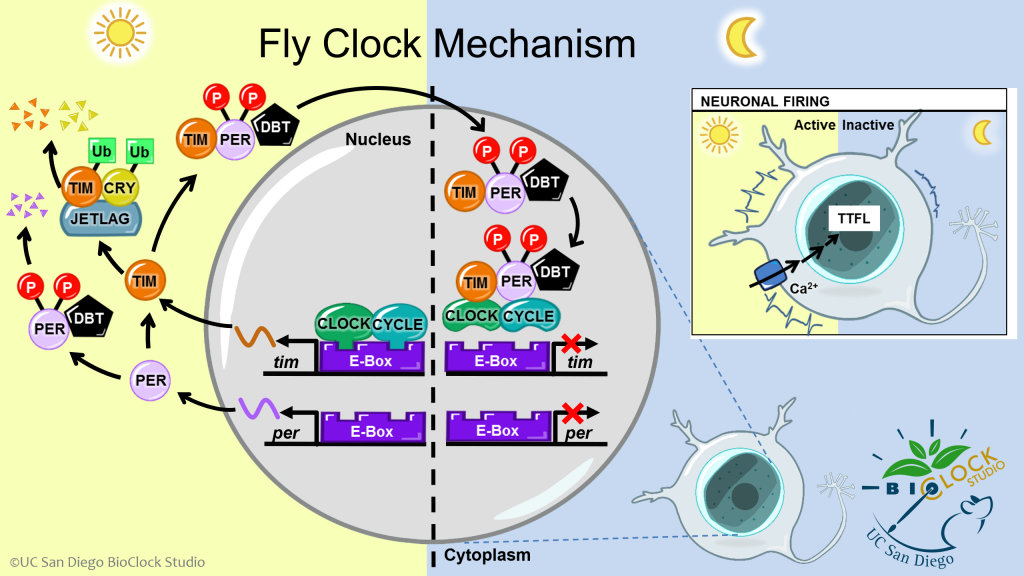This video provides an overview of discovery of the first gene identified to influence behavior, the Drosophila period gene, in 1971.
Since then, the molecular mechanisms in individual cells that underlie circadian rhythms have been discovered across species. In cyanobacteria, three proteins interact to regulate the circadian oscillator. This interaction not only powers the clock, but also cyanobacterial circadian gene expression.
The mammalian circadian clock is governed by a transcription-translation feedback loop that regulates itself and other genes. As an example, we show how the clock regulates metabolism through its actions on a single gene.
In plants, photoperiodic flowering is regulated by the circadian clock. It is controlled by unique molecular mechanisms.
We have also created free, editable powerpoint slides of the molecular feedback loops for Drosophila, mammals, and plants. We encourage you to use and modify them for your own presentations, papers, and reviews (CC BY 4.0).










